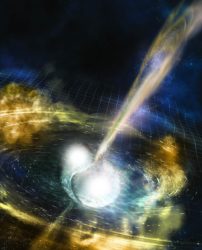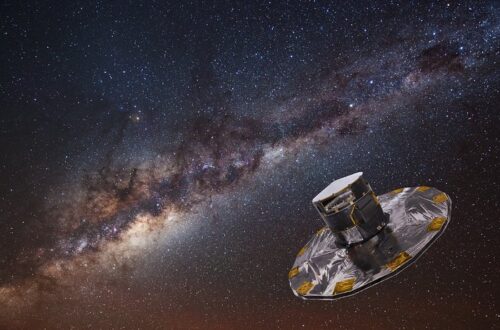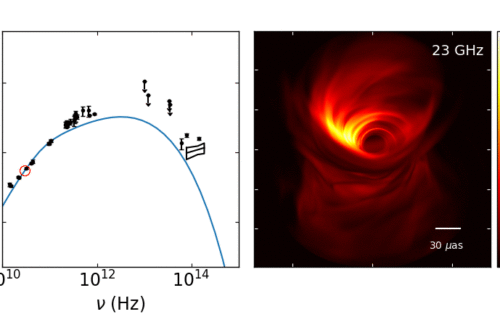Gamma-ray bursts (GRBs) have an interesting and colourful history. These extreme events were first discovered, serendipitously, in the 1960s by the U.S. Vela satellites. These satellites were originally designed to make sure that the Soviet Union does not perform any nuclear tests in space, which would be a violation of the 1963 Nuclear Test Ban Treaty. When a nuclear explosion takes place it emits flashes of gamma-ray radiation. These satellites had gamma-ray detectors on-board to detect these gamma-ray flashes in case of a nuclear detonation in space. Although the Vela satellites never detected any atomic bombs exploding in space, they observed a new, exciting, phenomenon; Gamma-ray bursts.
Initially scientists speculated that these new astrophysical events were occurring within our own galaxy, because otherwise it would require an astonishing amount of energy to be detected from Earth. However, later experiments showed that GRBs are distributed isotropically across the sky. This hinted at an extragalactic origin for these mysterious events. In the late 1990s the first optical counterpart was detected from a GRB and this detection allowed astrophysicists to verify that GRBs are indeed extragalactic.
A lot has changed in the GRB field since the 1990s. Nowadays, thanks to high-tech gamma-ray space observatories, we are able to detect approximately one GRB every week. The quick localisation provided by these satellites allows us to perform observations with space-based X-ray observatories and ground based optical and radio telescopes, minutes after a GRB occurs.
But what are these GRBs? The most prominent theory is that GRBs are ultra-relativistic (moving almost at the speed of light) collimated outflows launched when either a neutron star (an extremely dense remains of a “dead” star) collides with another neutron star/black hole, or when a massive star depletes its fuel and explodes as a supernova. When this outflow, i.e. jet, interacts with the interstellar medium, it forms a shock where particles are accelerated and emit light in a very broad spectrum. The emission from this shock is called the “afterglow” of the GRB. The afterglow of the GRB can stay visible in X-ray and optical wavelengths for months and even for years in radio wavelengths. Whereas, the initially detected, highly energetic gamma-rays are detected only for 1-1000 seconds. Although there are some prominent theories, the emission mechanism of these prompt gamma-rays is still highly debated.

In my Ph.D. project, one of my goals is to understand how tightly collimated these outflows are, i.e. how narrow the produced jet is.
The degree of collimation is crucial to understand the true energetics of these events. Launching a tight jet requires less energy than launching a broad jet with the same speed. Having a precise knowledge of the energetics will give us more clues about the physics of such extreme events.
Also, it is not possible to know how frequently these events occur in the universe, without knowing the collimation angle. The reason for this is that the emitted light is beamed towards the direction of the outflow (like a laser pointer) due to relativistic effects. Therefore, there may be many more GRBs occurring in the universe than anticipated. If the jet is not pointed towards us (if we are not in cone of the collimation angle), we might not receive any gamma-rays, thus missing the GRB.
I am performing numerical simulations in order to test and advance our current understanding of these amazing events. As our numerical techniques and observational facilities advance we are starting to understand more about the physics of GRBs. However, we also come up with more mysterious questions to answer!



